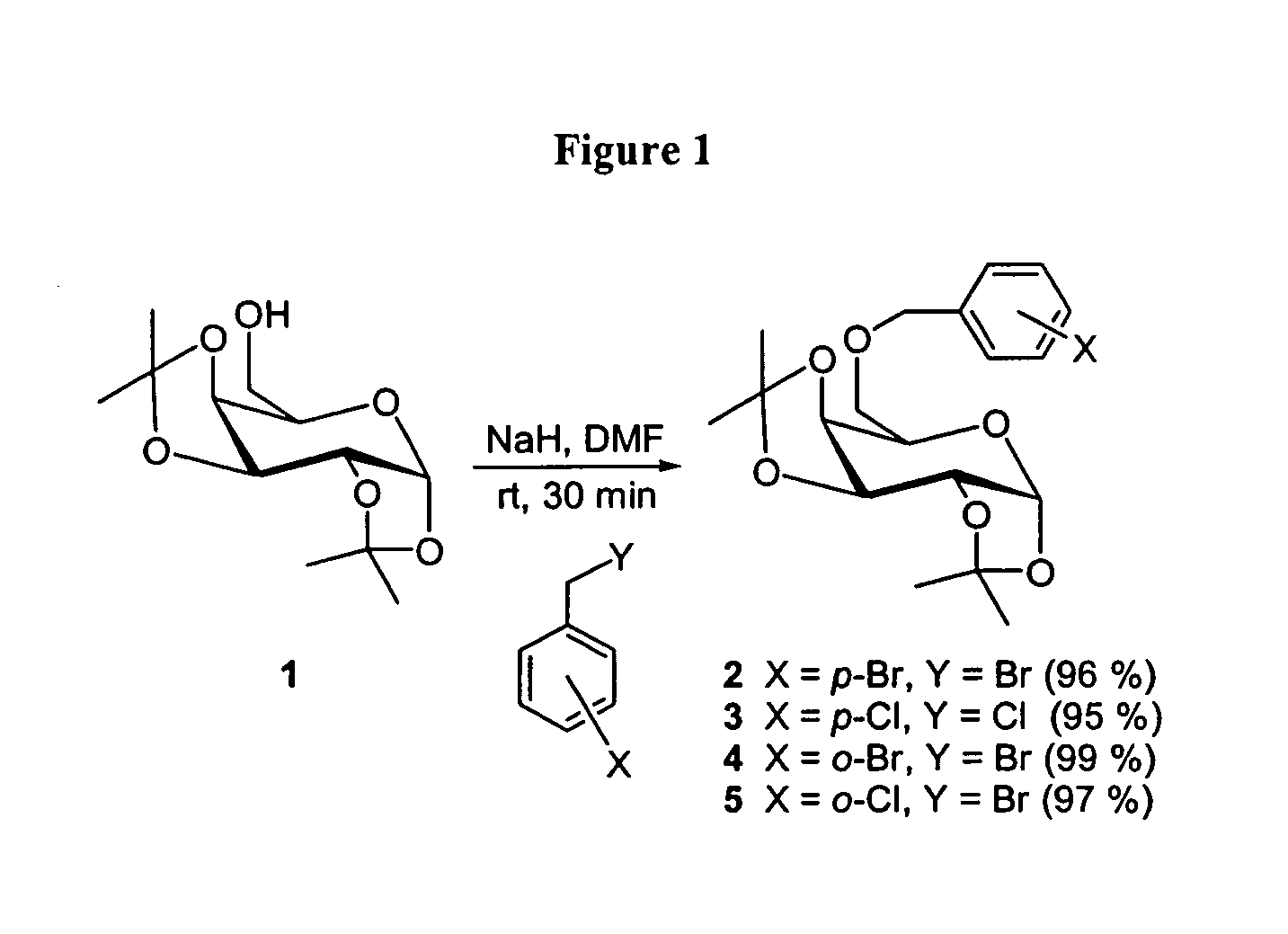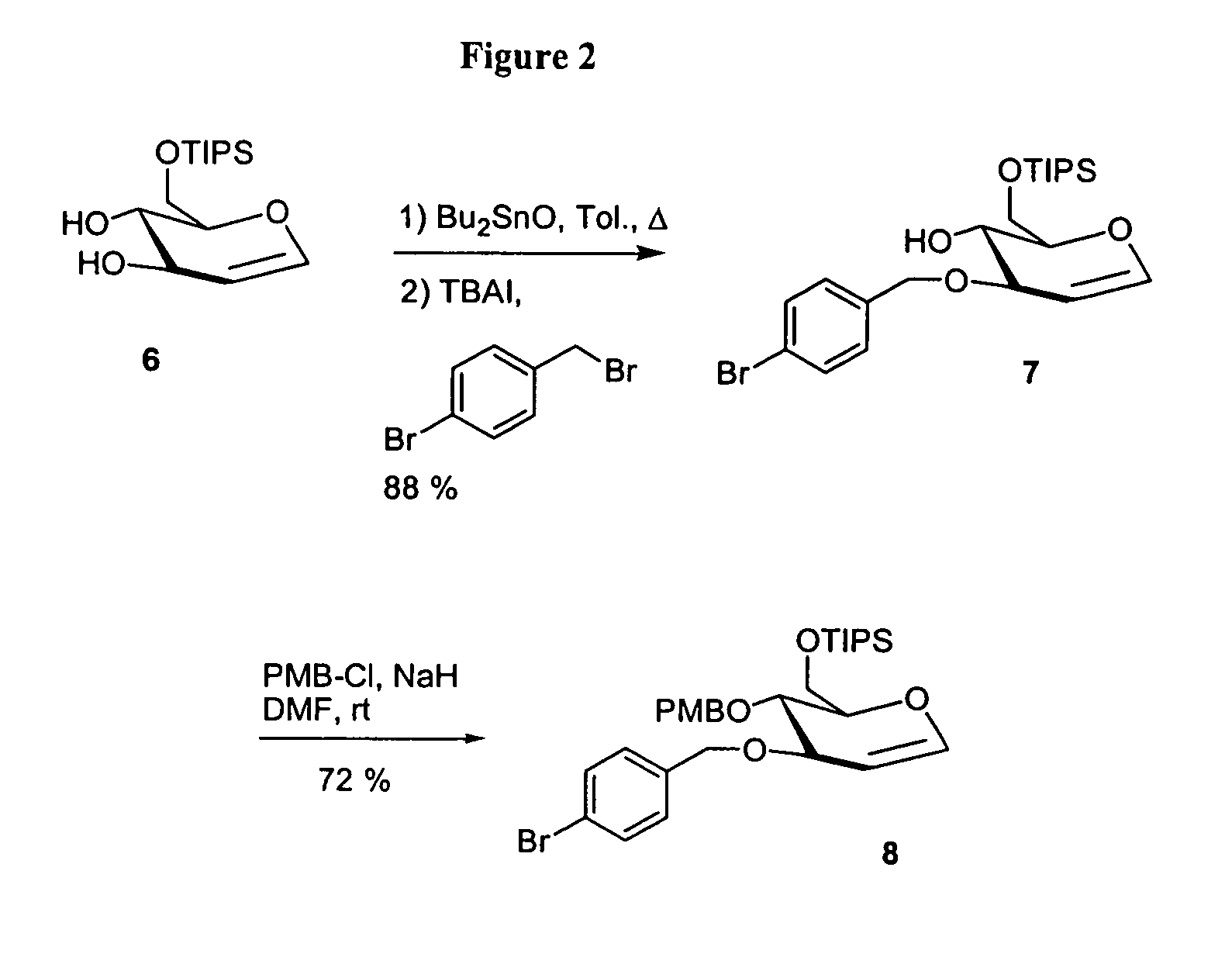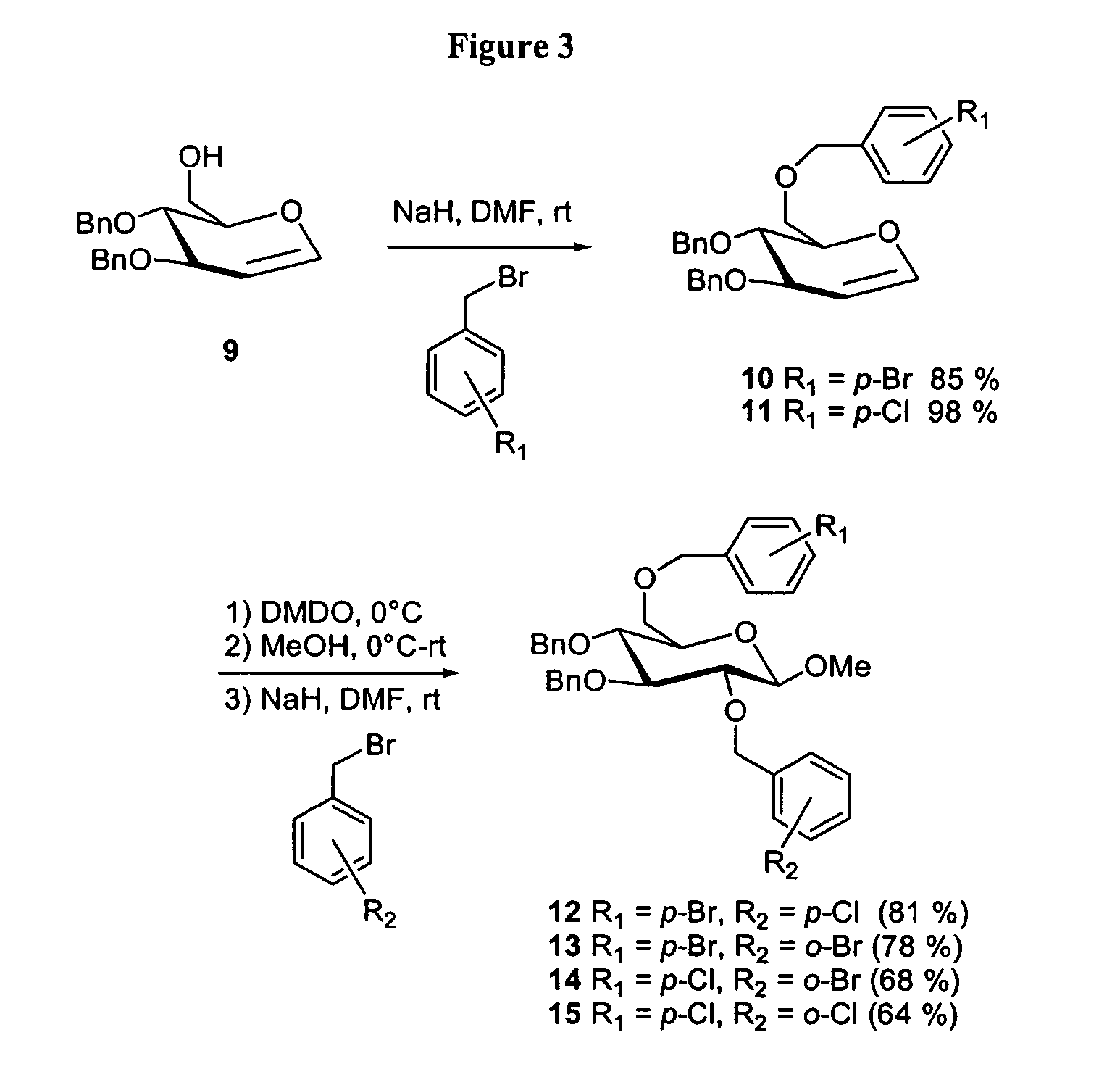Protecting groups useful in the synthesis of polysaccharides, natural products, and combinatorial libraries
- Summary
- Abstract
- Description
- Claims
- Application Information
AI Technical Summary
Benefits of technology
Problems solved by technology
Method used
Image
Examples
example 1
General Procedure for Benzylation of Alcohols
[0223]A flask containing the alcohol (1.0 equiv) was purged with nitrogen and charged with N,N-dimethylformamide (10 mL / mmol OH). A nitrogen purge was installed and NaH (1.1 equiv) and the substituted benzyl bromide (1.1 equiv) were added. The reaction was stirred at room temperature for 30 min then quenched by dropwise addition of water, diluted with EtOAc and washed with water and brine. The organics were dried over Na2SO4, filtered, concentrated and purified by flash silica column chromatography.
example 2
General Procedure for the Catalytic Amination of Aryl Bromides
[0224]A round-bottom flask was charged with aryl bromide (1 equiv) and co-evaporated with 3×3 mL toluene. The flask was purged with argon, the amine (1.2 equiv) was added and the residue dissolved in toluene (2 mL / mmol halide). An oven-dried resealable Schlenk flask was evacuated and backfilled with argon. The flask was charged with Pd2(dba)3 (1.0 mol % Pd), (o-biphenyl)P(t-Bu)2 (2 mol %), NaOtBu (1.4 equiv), evacuated and backfilled with argon. A rubber septum was installed and the aryl bromide / amine solution was added via cannula. A teflon screwcap was installed and the reaction was heated to 80° C. with vigorous stirring. After 5 h, the reaction was cooled to room temperature, diluted with diethyl ether, filtered through a silica plug and concentrated. The crude product was either purified by flash silica column chromatography or cleaved directly with a Lewis acid.
example 3
General Procedure for the Catalytic Amination of Aryl Chlorides
[0225]A round-bottom flask was charged with aryl chloride (1 equiv) and co-evaporated with 3×3 mL toluene. The flask was purged with argon, the amine (1.2 equiv) was added and the residue dissolved in toluene (2 mL / mmol halide). An oven-dried resealable Schlenk flask was evacuated and backfilled with argon. The flask was charged with Pd(OAc)2 (2.0 mol % Pd), (o-biphenyl)P(t-Bu)2 (4.0 mol %), NaOtBu (1.4 equiv), evacuated and backfilled with argon. A rubber septum was installed and the aryl chloride / amine solution was added via cannula. A teflon screwcap was installed and the reaction was stirred at room temperature. After 16 h, the reaction was diluted with diethyl ether, filtered through a silica plug and concentrated. The crude product was either purified by flash silica column chromatography or cleaved directly with a Lewis acid.
PUM
 Login to View More
Login to View More Abstract
Description
Claims
Application Information
 Login to View More
Login to View More - R&D
- Intellectual Property
- Life Sciences
- Materials
- Tech Scout
- Unparalleled Data Quality
- Higher Quality Content
- 60% Fewer Hallucinations
Browse by: Latest US Patents, China's latest patents, Technical Efficacy Thesaurus, Application Domain, Technology Topic, Popular Technical Reports.
© 2025 PatSnap. All rights reserved.Legal|Privacy policy|Modern Slavery Act Transparency Statement|Sitemap|About US| Contact US: help@patsnap.com



